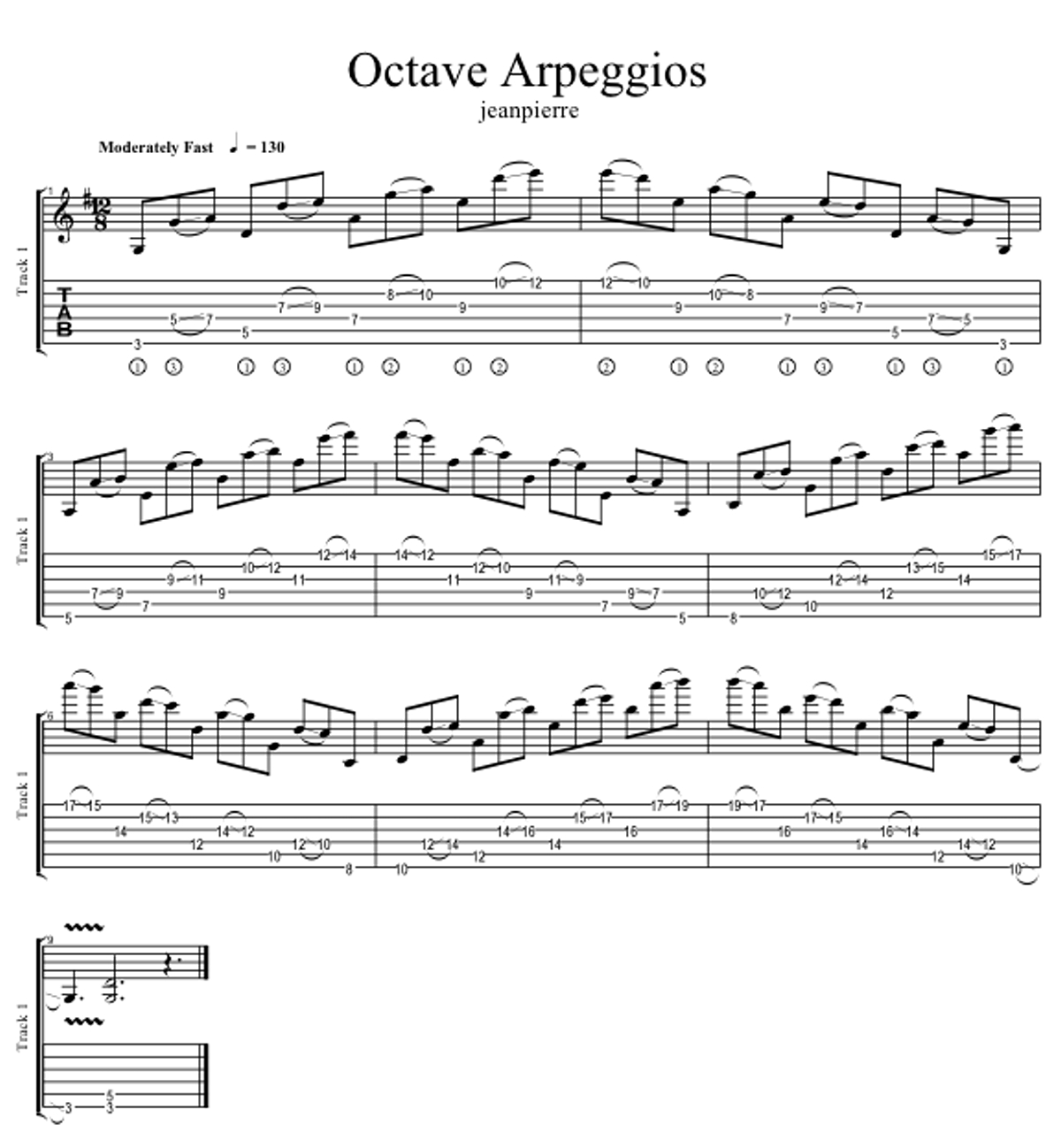As a guitar player and teacher I always stretched myself to use popular guitar techniques and ideas in an original manner as much as possible. Today I'm going to show you one of those stretches.
I trust you have a good idea what an octave is. But if not it's just a note repeated 8 notes higher or lower when moving in a scale or 12 notes higher or lower when moving chromatically. Arpeggios are notes/chords played one note at a time and not ringing together. With that sorted, let's get moving. Take any note and build 3 consecutive 5th intervals from it. For example if we choose G Major as our root these intervals would result GD DA AE. Now staying in the key of G Major do the same starting from the 2nd degree i.e. A so these 5th intervals will result AE EB BF# then go to the 4th i.e. C and you'll get these CG GD DA and then to the 5th i.e. D and these will result DA AE EB. As you might already know the 5th interval is the most consonant interval after the octave found in the equal temperament table of overtones where we get our 12 musical pitches!
But what's important for us today is that with these 5th intervals I created some octaves on each of the notes and blended them together with some slides to create some very cool unique runs that can add that missing edge in your soloing! Most cool thing is that every octave arpeggio is the same shape and uses same fingerings so learning one you'll know the four! Plus, they will fit in any Major scale and it's modes when used to solo with as there's no 3rd or 7th but only 5th distances in between themselves. Just resolve on the root of the key/mode you're in. If they work in G Major they'll work in all the other 11 Major scales/modes available. Just use the same terminology.
Be sure to play as written in tab/standard notation with the indicated fingerings so you keep everything smooth and tied together. You can even ascend from one octave arpeggio and descend from another. This is one of those lessons that is very simple to grasp in the theory stuff and easy to learn on fretboard but can open new doors and ideas in your creative musical world. It did to me so I'm sure it'll do likewise in yours!
Enjoy!

Jean-Pierre Zammit is a guitarist and instructor from Malta who has been playing guitar since the age of 14.
Zammit uses complex techniques, time shifts and scales in his writing, and always puts the song and the message he wants to portray first.
His is endorsed by Music Man guitars to use their Axis BFR models and Ernie Ball strings.